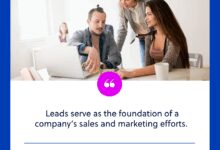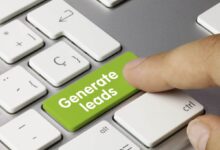Leads Definition: 7 Powerful Insights You Must Know Now
Ever wondered what a ‘lead’ really means in business? It’s more than just a name on a list. Let’s break down the leads definition in a way that’s clear, practical, and impossible to ignore.
Leads Definition: What Exactly Is a Lead?

At its core, the leads definition revolves around a person or organization showing interest in your product or service. This interest can be passive—like visiting your website—or active, such as filling out a contact form. Understanding this foundational concept is critical for any marketing or sales strategy.
Basic Characteristics of a Lead
Not every visitor qualifies as a lead. A true lead exhibits specific behaviors that signal intent. These include downloading a whitepaper, subscribing to a newsletter, or requesting a demo. Such actions indicate a willingness to engage further.
- Shows interest in a product or service
- Provides contact information
- Engages with marketing content
According to Investopedia, a lead is “a potential sales contact,” which aligns with the idea that not all traffic converts—but those who do engage are worth pursuing.
Difference Between a Lead and a Prospect
While often used interchangeably, a lead and a prospect are not the same. A lead is an early-stage contact, whereas a prospect has been qualified and is more likely to convert. Qualification involves assessing budget, authority, need, and timeline (commonly known as BANT).
“A lead is a spark; a prospect is a flame ready to ignite.”
Understanding this distinction helps businesses allocate resources more efficiently, focusing nurturing efforts on those most likely to buy.
Why the Leads Definition Matters in Modern Marketing
The leads definition isn’t just academic—it’s a cornerstone of performance-driven marketing. Without a clear understanding of what constitutes a lead, companies risk wasting time and money on unqualified audiences.
Alignment Between Sales and Marketing Teams
One of the biggest challenges in business is the disconnect between marketing and sales. A shared leads definition ensures both teams are on the same page. Marketing generates leads based on agreed-upon criteria, and sales accepts them knowing they meet a minimum standard.
For example, Salesforce emphasizes that defining leads clearly reduces friction and improves conversion rates across the customer journey.
Measuring Campaign Effectiveness
When you know what a lead is, you can measure how many your campaigns generate. This allows for accurate ROI calculations. If a Facebook ad brings 500 visitors but only 20 become leads, you can assess whether the cost per lead is sustainable.
- Enables accurate KPI tracking
- Supports data-driven decision-making
- Improves budget allocation
Without a standardized leads definition, metrics become meaningless—like counting apples and oranges together.
Types of Leads Based on the Leads Definition
Not all leads are created equal. The leads definition expands when we consider different types of leads, each requiring unique handling strategies. Categorizing leads helps tailor communication and increase conversion odds.
Marketing Qualified Leads (MQLs)
Marketing Qualified Leads are contacts who have engaged with your content and shown behaviors indicating interest. They might have downloaded an eBook, attended a webinar, or clicked through multiple blog posts.
MQLs are not yet ready to talk to sales but are prime candidates for nurturing via email sequences, retargeting ads, or personalized content.
Sales Qualified Leads (SQLs)
Sales Qualified Leads have been vetted by marketing and deemed ready for direct sales outreach. They’ve often requested a demo, asked for pricing, or responded positively to a sales call.
The transition from MQL to SQL should be based on a clear set of criteria agreed upon by both teams. This prevents premature handoffs and ensures sales reps focus on high-potential opportunities.
Product Qualified Leads (PQLs)
Common in SaaS and tech companies, Product Qualified Leads are users who have experienced the product firsthand—often through a free trial or freemium model—and shown signs of readiness to upgrade.
For instance, a user who upgrades from a free plan to a pro feature during a trial is a strong PQL. Their behavior demonstrates product fit and intent, making them highly convertible.
How Leads Are Generated: Channels and Strategies
Understanding the leads definition is only half the battle. The next step is knowing how leads are acquired. Different channels yield different types and qualities of leads.
Content Marketing and SEO
One of the most effective ways to generate high-quality leads is through content marketing. By creating valuable, informative content optimized for search engines, businesses attract organic traffic that’s already interested in their niche.
For example, a blog post titled “How to Choose the Best CRM for Small Businesses” can attract visitors actively researching solutions. When they download a related guide in exchange for their email, they become a lead.
- Blogs, eBooks, and guides
- Webinars and video tutorials
- SEO-optimized landing pages
As Backlinko highlights, SEO-driven content can generate consistent, long-term lead flow with minimal ongoing cost.
Paid Advertising (PPC and Social Media)
Paid channels like Google Ads and social media platforms allow businesses to target specific demographics and interests. While more expensive, they offer faster results and precise audience targeting.
A well-crafted Facebook ad campaign targeting small business owners interested in marketing tools can generate hundreds of leads in days. The key is aligning the ad message with a compelling offer—like a free consultation or discount.
“Paid ads put your offer in front of the right eyes—fast.”
Referral and Partner Programs
Word-of-mouth remains one of the most trusted lead sources. Referral programs incentivize existing customers to bring in new ones. Similarly, partner programs with complementary businesses can open access to new audiences.
For example, a web design agency might partner with a copywriting service. Each refers clients to the other, creating a steady stream of warm leads.
Lead Scoring: Prioritizing Based on the Leads Definition
Not all leads deserve equal attention. Lead scoring assigns numerical values to leads based on their behavior and profile, helping teams prioritize follow-up efforts.
Demographic and Firmographic Scoring
This involves evaluating leads based on who they are—job title, company size, industry, location, etc. A CTO at a mid-sized tech firm is likely more valuable than a student researching for a project.
Tools like HubSpot and Marketo allow businesses to set rules: e.g., +10 points for “Director” or higher, +15 for companies with 100–500 employees.
Behavioral Scoring
Behavioral scoring tracks what leads do. Did they visit the pricing page? Watch a product demo video? Open three consecutive emails? Each action adds points.
- Page visits (especially high-intent pages)
- Email engagement (opens, clicks)
- Content downloads and form submissions
When a lead hits a threshold—say, 80 points—they’re automatically routed to sales.
Common Mistakes in Applying the Leads Definition
Even experienced marketers make errors when defining and handling leads. Avoiding these pitfalls can dramatically improve conversion rates.
Overlooking Lead Quality for Quantity
Chasing high lead volume without regard for quality leads to wasted effort. A campaign that generates 1,000 leads but converts only 1% may seem impressive—until you realize 990 are unqualified.
Focus should be on attracting the right people, not just any people. As Neil Patel often says, “Better leads beat more leads every time.”
Poor Follow-Up Processes
Many leads are lost not because they weren’t interested, but because they weren’t followed up with promptly. Research shows that leads contacted within five minutes are 8x more likely to convert.
Automated workflows, CRM alerts, and dedicated follow-up teams can prevent this leakage.
Lack of Lead Nurturing
Only 20% of leads are ready to buy immediately. The rest need nurturing—consistent, value-driven communication that builds trust over time.
Without nurturing, these leads go cold. Email drip campaigns, personalized content, and retargeting ads keep your brand top-of-mind until they’re ready to act.
Future Trends Shaping the Leads Definition
The concept of a lead is evolving. Advances in technology and shifts in consumer behavior are redefining what it means to be a lead in 2024 and beyond.
AI and Predictive Lead Scoring
Artificial intelligence is transforming lead qualification. Predictive lead scoring uses machine learning to analyze historical data and predict which leads are most likely to convert.
Platforms like Salesforce Einstein and HubSpot AI can identify patterns humans might miss, such as subtle behavioral cues or engagement trends across thousands of leads.
Privacy-First Lead Generation
With increasing data privacy regulations (GDPR, CCPA) and the deprecation of third-party cookies, businesses must adapt. The future of leads lies in first-party data—information collected directly from users with consent.
This means more emphasis on value exchange: offering something useful in return for contact details, like a personalized report or exclusive content.
Rise of Conversational Marketing
Chatbots, live chat, and messaging apps are becoming primary lead generation tools. They allow real-time engagement, capturing intent the moment it arises.
For example, a visitor browsing a pricing page might be greeted by a chatbot asking, “Need help choosing a plan?” This instant interaction can convert a passive visitor into a qualified lead in seconds.
What is the basic leads definition?
A lead is a person or organization that has shown interest in your product or service by providing contact information or engaging with your content. It’s the first step in the sales funnel.
What’s the difference between a lead and a prospect?
A lead is an unqualified contact, while a prospect is a lead that has been vetted and deemed likely to convert based on criteria like budget, need, and authority.
How do you generate high-quality leads?
High-quality leads are generated through targeted content, SEO, paid ads, and lead nurturing. Focus on attracting the right audience with valuable offers and clear calls to action.
What is lead scoring?
Lead scoring is a system that ranks leads based on their behavior and profile, helping sales and marketing teams prioritize follow-up efforts on the most promising prospects.
How is AI changing the leads definition?
AI is enabling predictive lead scoring, automated nurturing, and smarter targeting. It’s making lead qualification faster, more accurate, and scalable.
Understanding the leads definition is not just about knowing a term—it’s about mastering the foundation of sales and marketing success. From identifying different types of leads to leveraging AI for smarter follow-ups, every aspect impacts your bottom line. By defining leads clearly, scoring them effectively, and nurturing them strategically, businesses can turn interest into revenue. The future of lead generation is smarter, faster, and more personalized than ever. Stay ahead by embracing these principles today.
leads definition – Leads definition menjadi aspek penting yang dibahas di sini.
Further Reading:


